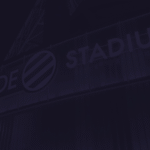For the first time in history, organizations have the complex task of managing five generations. Traditionalists (born before 1946), Baby Boomers (1946-1964), Generation X (1965-1980), Millennials (1981-1996), and Generation Z (1997 onwards) are all working together. This unprecedented diversity brings unique challenges and opportunities for organizations willing to leverage their generational differences.
Generational characteristics
Each generation brings distinct values, work styles, and communication preferences shaped by their historical context (though not every staff member will neatly confine to these characteristics, of course). Traditionalists and Baby Boomers might value hierarchy, formal communication, and long-term company loyalty more than Gen Z workers. Generation X tends to be self-reliant, adaptable, and focused on work-life balance. Millennials often prioritize purpose-driven work, collaborative environments, and technological integration. Gen Z value independence and more rapid career advancement and are technologically savvy.
Communication
Effective cross-generation communication requires flexibility and understanding. Younger generations might prefer instant messaging and informal communication channels, while older professionals often value face-to-face interactions and more structured communication. Successful organizations implement multi-channel communication strategies that accommodate varying preferences.
The role of specialized recruiters
Specialized recruiters play an important role in building and maintaining multigenerational workforces. These professionals understand the nuances of different generational preferences. Recruiters help organizations assess candidates’ ability to work with others by assessing past experiences and gauging their adaptability to different communication styles. In fields such as healthcare, recruiters like MASC Medical (mascmedical.com) offer industry knowledge and access to a wider pool of candidates, streamlining the recruitment process.
The power of diverse experiences
Rather than viewing generational differences as obstacles, forward-thinking organizations harness them as strategic advantages. For example, reverse mentoring programs pair younger employees with senior staff members, allowing for bilateral knowledge transfer. Younger team members can share digital expertise, for example, while learning from extensive industry experience of senior colleagues.
Breaking down stereotypes
One of the biggest challenges in maintaining multigenerational workplaces is overcoming preconceived notions about different age groups. Common stereotypes such as older workers being resistant to change, or younger workers lacking commitment, can create unnecessary tensions and barriers to collaboration. Managers should focus on individual capabilities and contributions rather than allow themselves and other workers to be influenced by generational stereotypes.
Measuring success
Organizations can track key metrics to evaluate their multigenerational management efforts. They can check employee engagement across different age groups, the results of collaboration in mixed-generation teams, knowledge transfer success rates, and retention rates across different generations.
Regular surveys, feedback scores, and usage rates of different communication channels can provide insights into engagement and satisfaction. Performance and productivity can be assessed by looking at project completion rates, innovation metrics (new ideas submitted and implemented) by diverse teams, and productivity measurements accounting for different work styles. Organizations should look at turnover rates and participation in learning and development programs by generation.
Moving forward
As workplace demographics continue to change, businesses must remain adaptable in their approach to managing multigenerational workforces. By fostering an environment of mutual understanding and respect, companies can create stronger, more resilient teams capable of leveraging their generational diversity as an advantage.















